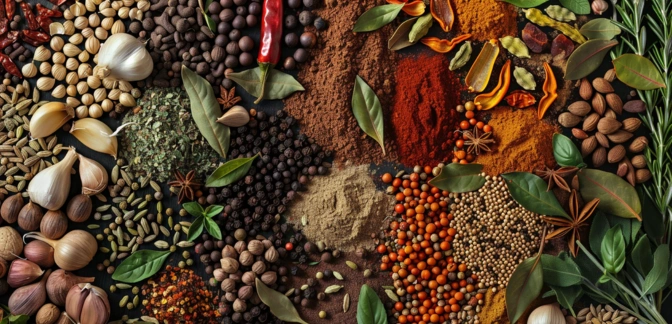Cilantro — Nutrients, Health Benefits, And Shopping Tips

Written by Listonic Team
Last update on September 5, 2024
Cilantro nutrients
Nutrition facts
Amount per 100 g
Calories
🔥 23 kcal
| Nutrition per: 100 g | Value | % Daily Value* |
|---|---|---|
| Carbs | 4 g | 1.45% |
| Fiber | 3 g | 10.71% |
| Sugars | 1 g | 2% |
| Glycemic Index | 0 | - |
| Protein | 2 g | 4% |
| Sodium | 46 mg | 2% |
| Total Fat | 1 g | 1.28% |
*The % of Daily Value (DV) tells you how much a nutrient in a serving of food contributes to a daily diet. 2,000 calories a day is used for general nutrition advice.
23
🍏 Low-Calorie Foods
Cilantro facts & tips
Health benefits
- Rich in antioxidants, which help protect the body from free radicals and reduce inflammation.
- High in vitamins and minerals such as Vitamin A, Vitamin C, and Vitamin K, which support overall health and well-being.
- Supports digestive health by promoting the production of digestive enzymes and reducing symptoms of indigestion.
- May have antimicrobial properties, helping to fight off infections and improve overall health.
Health risks
- Potential for allergic reactions in some individuals, particularly those allergic to cilantro or related plants, causing symptoms like itching, swelling, or difficulty breathing.
- Risk of contamination with pesticides or harmful bacteria if cilantro is not properly washed or sourced from organic suppliers.
- Potential for digestive discomfort in sensitive individuals, though this is generally rare.
- Low nutrient density as cilantro is typically used in small amounts as a garnish or seasoning, offering limited vitamins or minerals.
How to choose cilantro
Cilantro should be vibrant green and free from wilting or yellowing leaves. The stems should be firm and the leaves should spring back when gently pressed.
Avoid cilantro that has limp leaves or a slimy coating, as this indicates it is past its prime. Bunches that have a mildew smell or are browning at the edges should also be avoided, as they will not provide the best flavor or visual appeal in dishes.

How to store cilantro
Fresh cilantro should be stored in the refrigerator, ideally in a glass of water covered with a plastic bag. Refrigeration keeps it fresh for up to a week.
Moisture can cause cilantro to wilt and spoil. Avoid washing before storage to prevent mold growth. Always check for any signs of spoilage and trim the stems regularly to maintain freshness.
✅ Extra Tip
How long does it last?
Cilantro can last for 1-2 weeks in the refrigerator when stored in a plastic bag with a paper towel to absorb excess moisture. For longer storage, cilantro can be frozen, lasting up to 6 months. Ensure it is properly sealed to maintain its freshness and flavor.
What to do with leftovers?
Leftover cilantro can be used in a variety of culinary and non-culinary ways. In the kitchen, cilantro adds a fresh, citrusy flavor to dishes like salsas, salads, soups, and garnishes. It’s commonly used in Mexican, Indian, and Thai cuisine to enhance the flavor of both cooked and raw dishes.
Beyond cooking, cilantro has several practical uses. It can be used in homemade beauty treatments, such as mixing it into face masks or scrubs to help cleanse and refresh the skin. Cilantro can also be used in DIY natural remedies, as it’s believed to help detoxify the body and support digestion when consumed or used in teas. Additionally, cilantro can be added to homemade potpourri or sachets to bring a fresh, herbal scent to your home. It can also be grown from scraps, making it a sustainable addition to your kitchen garden.
👨⚕️️ Medical disclaimer
Discover products from other categories
Listonic Team
Fact-checked
Our editorial team checked this article to make sure it was accurate at the time of publishing it.
Get the top-rated shopping list app on your phone!







